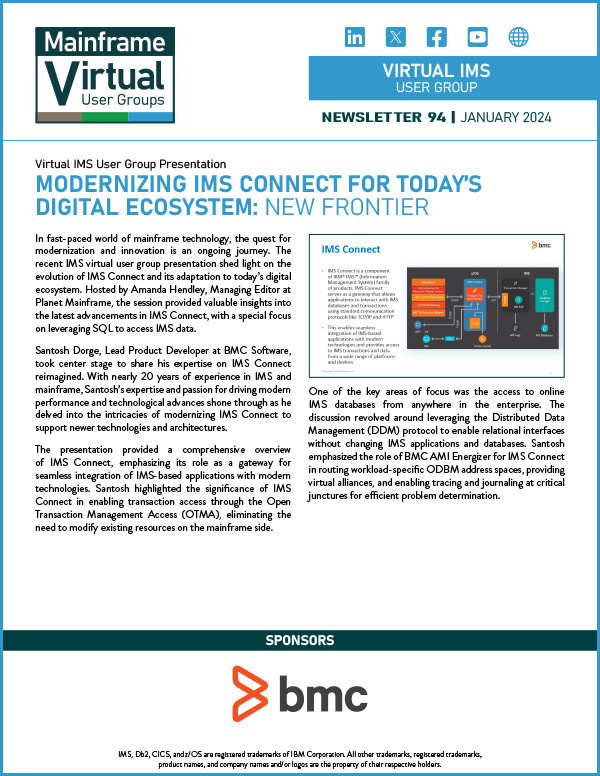Virtual IMS User Group Sponsors
Virtual IMS Meetings
April 9, 2024
How to Help IBM AND YOU
Quickly Resolve IMS Problems
We all know IMS is perfect. But on the rare occasion when there is a problem is must be solved quickly. This presentation will document how to make that happen.
Register Here!

